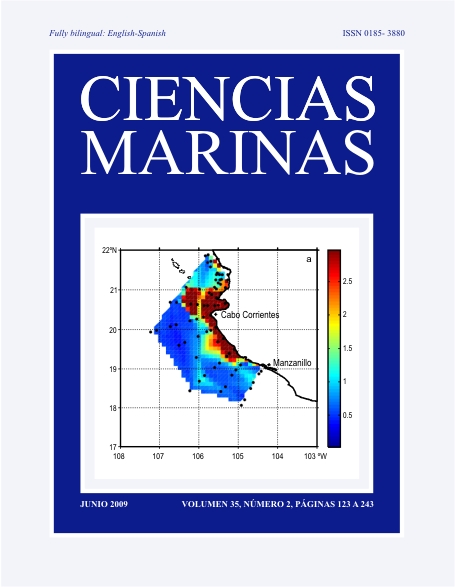The artisanal elasmobranch fishery on the east coast of Baja California, Mexico: Characteristics and management considerations
Main Article Content
Abstract
The Mexican elasmobranch fishery ranks among the most important in the world, but details associated with fishing effort and species composition are generally unavailable, particularly for the extensive artisanal fishery. Seasonal surveys were conducted during 1998–1999 in the state of Baja California to determine the extent and activities of the artisanal elasmobranch fishery along its Gulf of California coast. Artisanal fishermen were highly opportunistic, and temporally switched targets depending on the local abundance of teleost, invertebrate, and elasmobranch fisheries resources. At least 17 species of shark, 13 species of ray, and 2 species of skate were identified among the 4495 specimens observed. Small, coastal sharks and rays were typically landed with bottom set gillnets during all surveyed seasons (spring–autumn) and large sharks were targeted with surface set (drift) gillnets during summer and autumn. Sharks and rays contributed similarly to elasmobranch landings, comprising 50.9% and 48.3%, respectively, of the total recorded catch. Overall landings were dominated by mustelid sharks (Mustelus henlei, Mustelus spp.) and the shovelnose guitarfish (Rhinobatos productus), with Alopias pelagicus, Gymnura spp., Heterodontus mexicanus, Mobula munkiana, Myliobatis californica, and Squatina californica also representing important components of the landings. Alopias vulpinus had previously been unreported for the Gulf of California and a new maximum size record was documented for Myliobatis longirostris. Catch rates (mean elasmobranchs/vessel/trip ± standard error) were lowest during autumn (17.4 ± 3.9) and highest in spring (35.3 ± 14.1). Adult, commonly gravid, A. pelagicus, Carcharhinus falciformis, and R. productus females comprised a disproportionately greater component of the landings than did their male counterparts. Given the decades of largely unrestricted exploitation of elasmobranchs in Mexican waters, population declines and shifts in size structure are likely to have occurred among those species with the lowest fecundity and latest ages at maturity.
Downloads
Article Details
This is an open access article distributed under a Creative Commons Attribution 4.0 License, which allows you to share and adapt the work, as long as you give appropriate credit to the original author(s) and the source, provide a link to the Creative Commons license, and indicate if changes were made. Figures, tables and other elements in the article are included in the article’s CC BY 4.0 license, unless otherwise indicated. The journal title is protected by copyrights and not subject to this license. Full license deed can be viewed here.

